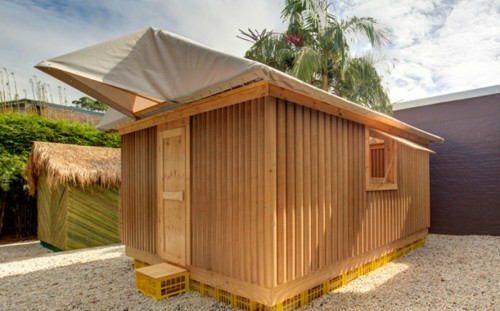RECOMMENDED VIDEOS

Lean Giap Building Material: ISOLINE - Under Roofing System
Lean Giap Building Materials Sdn Bhd

Elkem is a world leading supplier of environment-friendly…
Elkem AS

HydroFlex Lime and Rust Remover
Hydros Solutions Ltd

Euro Eco Windows
Euro Eco Windows

Innovation in Cement Industry – Eco-friendly, Sustainable…
Navrattan Blue Crete Industries Pvt. Ltd.
Related Stories
‘House of Trash’ proves how waste can transform into beautiful home design
Whimsical park built of recycled materials pops up in Shanghai
Elevated bamboo peace bridge for the Korean Demilitarized Zone unveiled by Shigeru Ban and Jae-Eun Choi
Colossal cardboard temple pops up in Chiang Mai in just one day
“Cannabis walls” add warmth to this eco-friendly home in Israel
03 Apr, 2017

Ingenious cardboard and bamboo emergency shelters by Shigeru Ban pop up in Sydney
Green Building Materials, Construction & Design | JAPAN | 30 Mar, 2017
Published by : Eco Media Asia
Pritzker Prize-winning Japanese architect Shigeru Ban is widely known and respected for his 20 year career in designing groundbreaking buildings from cardboard, paper and other unexpected materials, as well as his humanitarian efforts in designing emergency shelters for natural disasters, such as the Nepal Earthquake and the tsunami which hit Southeast Asia. To celebrate the architect’s long dedication to humanitarian design, two of his signature disaster relief shelters have been erected in the Courtyard Garden of Sydney’s Sherman Contemporary Art Foundation (SCAF).


Although disaster housing design has advanced by leaps and bounds due to the burgeoning refugee crises, Ban has made a long career of building structures out of locally-sourced and recycled materials – including cardboard tubes, bamboo and recycled milk crates. The structures currently on display at the SCAF are two of his signature designs made of cardboard. The first was designed for the 1995 Kobe earthquake and is constructed from vertical rows of cardboard tubes. The second design, which was made after the 2016 Ecuador earthquake, also has a cardboard frame, but is clad in bamboo.
In addition to the two shelters on display in the courtyard, visitors can also see scales of the architect’s additional work on the interior. The exhibit includes some of Ban’s most well-known designs including the amazing Cardboard Cathedral built in Christchurch, New Zealand in 2013.

Although Ban has a diverse architectural profile, affordable disaster shelters will always be what drives his inspiration: “Architects mostly work for privileged people, people who have money and power,” he explains. “Power and money are invisible, so people hire us to visualize their power and money by making monumental architecture. I love to make monuments, too, but I thought perhaps we can use our experience and knowledge more for the general public, even for those who have lost their houses in natural disasters."


Article from inhabitat.com
by Nicole Jewell
Photography by Brett Boardman
